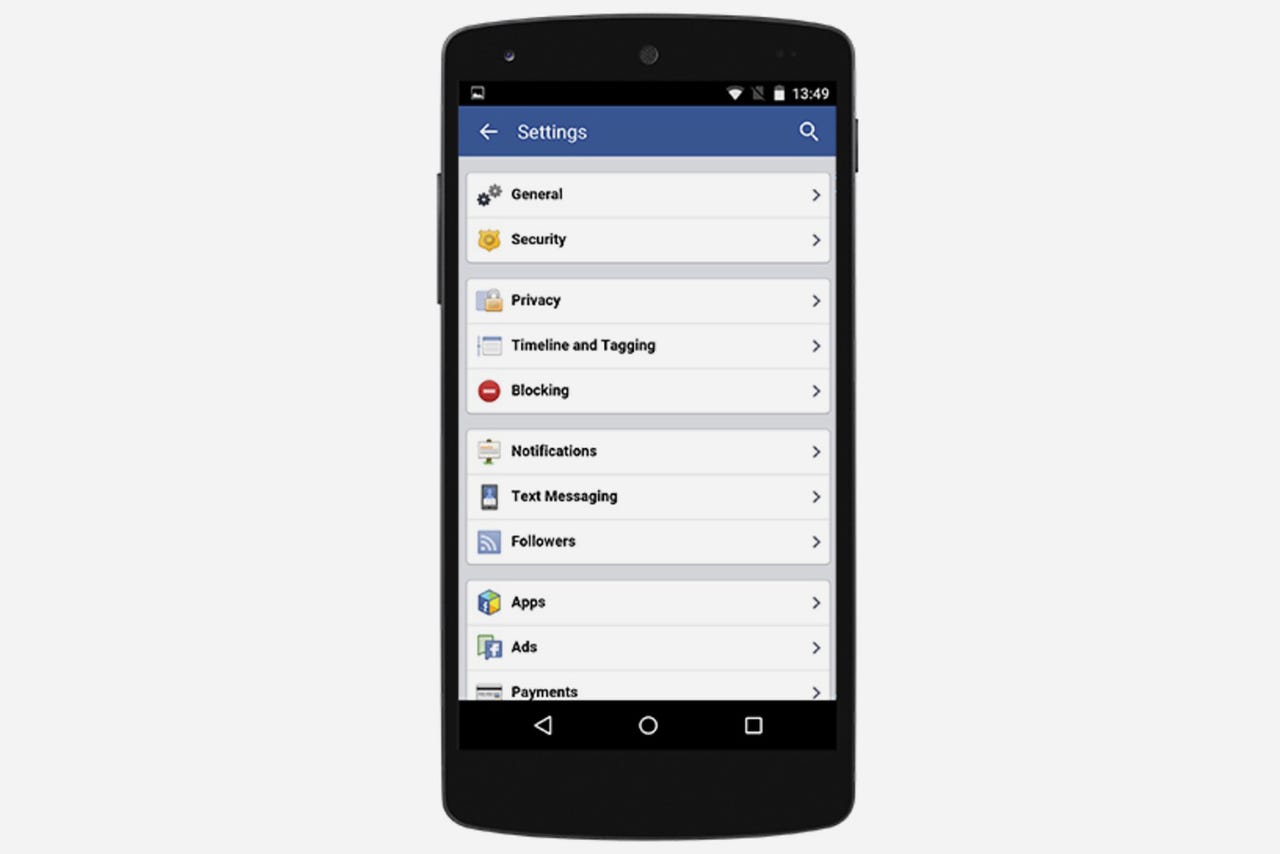Adjust these Facebook privacy settings to protect your personal data

Facebook knows a lot about you
Facebook knows a lot about you. And so do the third-party app makers and partners in the social network's ecosystem.Facebook apps can bleed your information without you knowing.
In wake of the scandal, it's important to know which apps have access to your personal data and make the appropriate privacy changes to your account.
Facebook has rolled out new settings to appease users after the Cambridge Analytica scandal. Here's what you need to know.
More Facebook F8
Facebook's App Settings page
Facebook's App Settings page is one of the social network's most important privacy destinations.
App Settings displays Facebook apps that are connected to your Facebook account. Here, you can see what data you provide apps and disable sharing select info. You can also remove the app completely from your Facebook account.
Yes, even the FarmVille app you downloaded three years ago.
More Facebook F8
How to access Facebook's App Settings page from the web
To access Facebook's App Settings on the web: Click or tap the downward-facing triangle to launch a drop-down menu at the top right of Facebook.com, then select Settings, and click or tap Apps.
More Facebook F8

How to access Facebook's App Settings page from Android devices
On Android: Tap the three-line button at the top right of the Facebook app. Here you select Account settings and then Apps.
More Facebook F8
How to access Facebook's App Settings page from iOS devices
In iOS: Tap the three-line button (bottom right of Facebook's app), then select Settings, and go to Account Settings. Finally, select Apps.
More Facebook F8
Unlink any Facebook apps from your account
It's probably wise to unlink any Facebook apps from your account you no longer use. Remember, Cambridge Analytica's app was legitimate on the surface. Apps have access to your friend list and any information your friends choose to make public -- don't be fooled.
More Facebook F8
Control app visibility
Facebook's App Settings also lets users control app visibility, so you can adjust if your friends can see if you use an app or not.
More Facebook F8
Completely disable the Facebook app platform
Instead of cherry picking and disabling Facebook apps, you can completely disable the Facebook app platform. This means you won't be able to use Facebook integrations on third party apps or websites who access data through OAuth. Theoretically, you won't be sharing as much data with prying eyes. You can turn off Facebook's app platform off by going to App Settings, then edit Apps, Websites and Plugins.
More Facebook F8
Just keep in mind...
When you disable Facebook's app platform:
- You will not be able to log into websites or applications using Facebook.
- You will not be able to log into mobile games or applications using Facebook.
- Your friends won't be able to interact and share with you using apps and websites.Instant personalization will also be turned off.
- Apps you've previously installed may still have info you shared. Facebook says you should contact apps for details on removing this data.
- Apps you've logged into (with Facebook or Anonymously) will be removed.
- Posts by apps will be removed from your profile.
More Facebook F8
Facebook's Access Your Information setting
A new setting Facebook rolled out, called Access Your Information, lets users access and delete their posts, reactions, comments, and searches from their timeline or profile. (Facebook said the new setting was already in the works before the Cambridge Analytica scandal.)
More Facebook F8
Download your archive
While Facebook previously allowed users to download data and information uploaded, a new option sorts the download into several categories including posts, photos and videos, messages, groups, following, followers, and more.
More Facebook F8
Privacy Shortcuts menu
Also new is a Privacy Shortcuts menu to give users easier access to data controls. Here, you can make your account more secure with settings like two-factor authentication, control personal information, control advertisement information, profile privacy, and more.
More Facebook F8
Security and Login settings page
The Security and Login settings page shows you the location where your Facebook account is logged in and from which device. It also allows you to change you password, log in with a profile picture instead of password, enable/disable two factor authentication, encrypted email notifications, and more.
More Facebook F8
Privacy settings page
The Privacy settings page shows who can see your Facebook profile information, including posts you've made or you're tagged in, friend requests, friends list, email, phone number, and search engine enable/disable.
More Facebook F8
Check Facebook mobile app permission
You can also check Facebook mobile app permission details including storage access, camera, whether the microphone can record audio or not, phone status, approximate location (network-based), and your precise location (GPS and network-based).
Finally, remember to clear your web browser cookies. This will allow you to send less data to Facebook to use in advertisements on yourself.